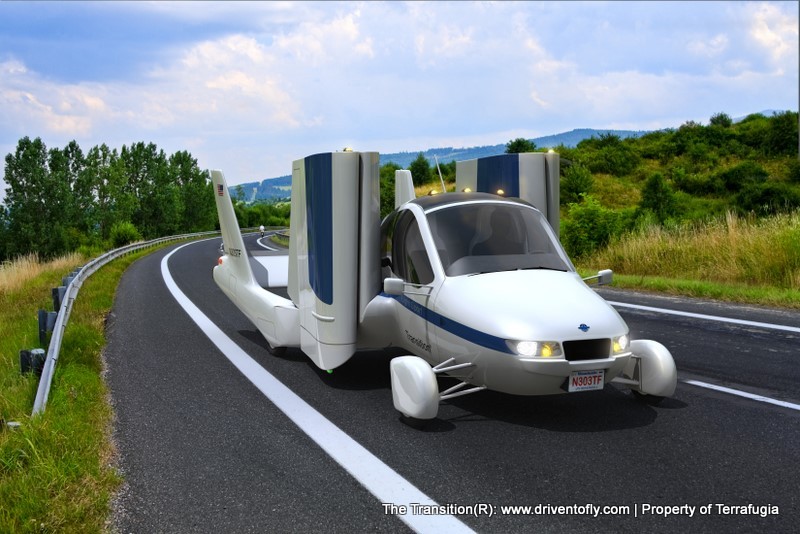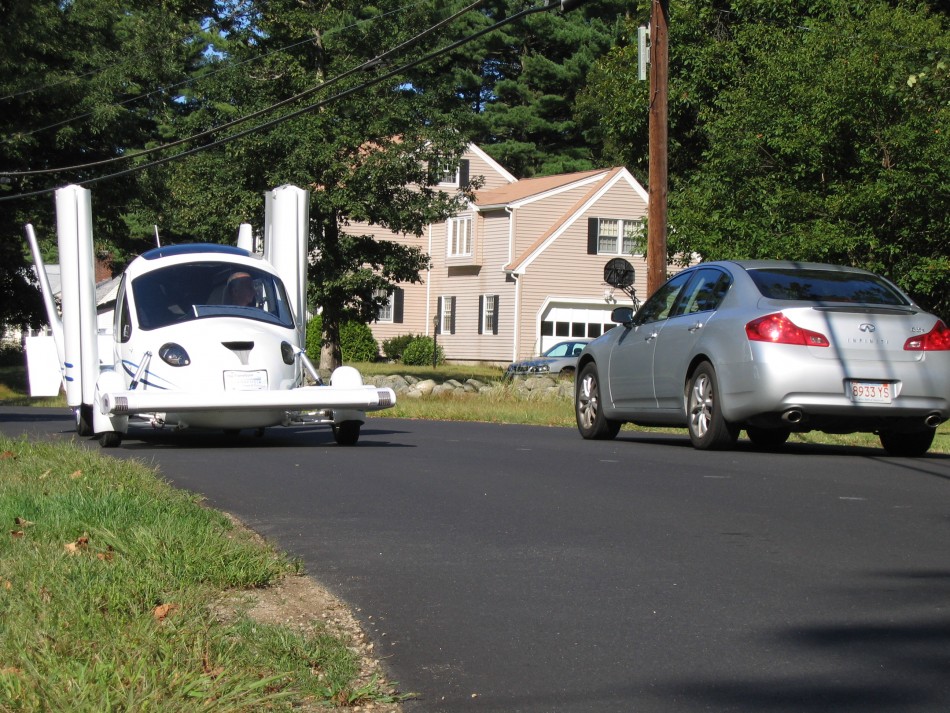The First Flying Car is Ready, But is it Really a Viable Travel Option?
A flying car was unveiled on Monday at the New York Auto show and no wonder many curious pairs of eyes eagerly looked at the sky with awe. But the immediate question to be pondered upon is whether the flying car is practically a viable option.
The car named 'The Transition' already received more than 100 pre-orders with initial desposits of $10,000 (£6,000) each, says the manufacturer Terrafugia. And it's expected to cost around $279,000 (£175,000) which is much cheaper when compared to the costliest Bugatti or Lamborghini.
However, is it practically feasible to drive/fly this car? It can possibly be a mainstay of science-fiction books and movies, but will this be good news or a nightmare for the air-traffic authorities all over the world?
The Transition flew at an altitude of 14,00 feet which is much lower than that of a commercial jet's 35,000 feet. Still, the car needs a runway and it will not help if you are stuck in traffic. It can reach around 112 kms per hour on the road and 185 in the air; sadly it is neither faster than a regular car on a road nor quicker than a plane in the air.
The vehicle has two seats, four wheels and wings that fold up so it can be driven like a car although you cannot expect it to fit in a regular parking lot. Apparently, it flies using an 87-litre tank of automotive fuel and burns 18 litres per hour in the air. While on the ground, it gives a mileage of 15 miles per litre.
To fly the Transition, Terrafugia says the owner need to pass a test and complete 20 hours of flying time in a specially designed course. The vehicle is classified as a Light Sport Aircraft (LSA).
In fact, the manufacturer's website clearly states, "The Transition isn't designed to replace anyone's car, but it could replace your airplane. It reduces the cost of ownership of an airplane by burning automotive gasoline, parking in your garage at home instead of renting hangar, and nearly eliminating ground transportation charges."
Terrafugia spokesperson Steve Moscaritolo recently said that some of those buyers want it for the "new toy" aspect, but there are many who want to commute somewhere each weekend, or almost every day, and want to avoid parking headaches and security lines at the airport. So, the buyers, whether rich or poor, have to ponder this option carefully.
The first versions are expected to be available by the end of 2012.







© Copyright IBTimes 2025. All rights reserved.




















